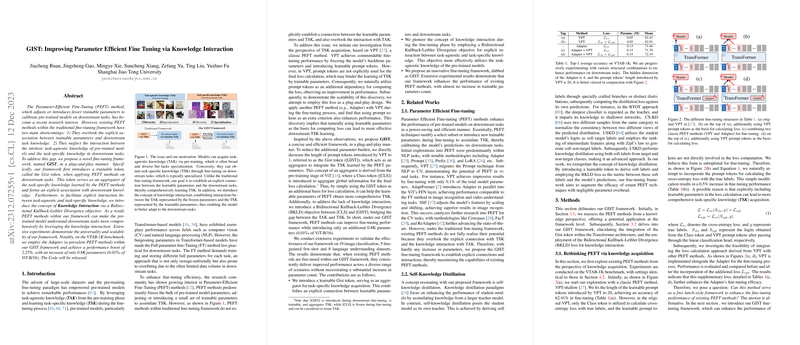Understanding GIST: Enhanced Fine-Tuning for AI Models
Background
AI models, especially those based on Transformers, have seen substantial advancements and have significantly improved performance across numerous fields. However, the considerable size of these models presents challenges, particularly when fine-tuning for specific tasks. Each task typically requires separate, full-scale model training, leading to high storage costs and possible overfitting due to limited data in specialized tasks.
Parameter-Efficient Fine-Tuning
Recently, research has pivoted towards Parameter-Efficient Fine-Tuning (PEFT) methods. These methods aim to adjust or introduce only a minimal set of trainable parameters to adapt pre-trained models to new tasks. Though promising, PEFT within the traditional fine-tuning framework can be suboptimal as it does not create a clear connection between new parameters and task-specific knowledge (TSK), nor does it consider the interaction with the underlying task-agnostic knowledge (TAK) derived from general pre-training.
Introducing GIST
To bridge these gaps, researchers have conceptualized a new fine-tuning framework called GIST. This framework innovates the fine-tuning process by implementing two main features:
- Gist Token: A trainable token is introduced when applying PEFT methods to new tasks. This token serves as a dedicated vessel for absorbing TSK during fine-tuning. The Gist token adapts the concept of the Class token, typically used in Transformers to capture global information, assigning it the role of integrating TSK learnt by PEFT parameters.
- Knowledge Interaction: To foster an effective mingling between TAK (that the model intrinsically has from its pre-training) and TSK, the Gist model utilizes a novel objective called Bidirectional Kullback-Leibler Divergence (BKLD). The model is thus trained to marry the nuances of broad, generic knowledge with specialized task knowledge.
Empirical Validation
When put to the test on various benchmarks, models fine-tuned within the GIST framework consistently outperform their traditional framework counterparts. The success is evident across a range of applications, from image classification to language understanding tasks—confirming the framework's adaptability and scalability.
What sets GIST apart is its ability to significantly enhance model performance with an almost negligible increase in the number of trainable parameters. For example, an experiment on the VTAB-1K benchmark using the Adapter (a popular PEFT method) within the GIST framework exhibited a performance increase of 2.25% while adding a mere 0.8K parameters.
Conclusion
GIST marks a significant step in the evolution of PEFT techniques. It establishes a direct link between fine-tuning parameters and task-specific objectives while synergizing with the foundational knowledge models have accumulated. The outcome is a genuinely scalable and efficient avenue for task adaptation, enabling more resourceful AI systems that are better at specific tasks without being exhaustive on computational resources. Future research may continue to explore this direction, possibly uncovering even more proficient ways of leveraging the vast knowledge embedded within pre-trained AI models.
